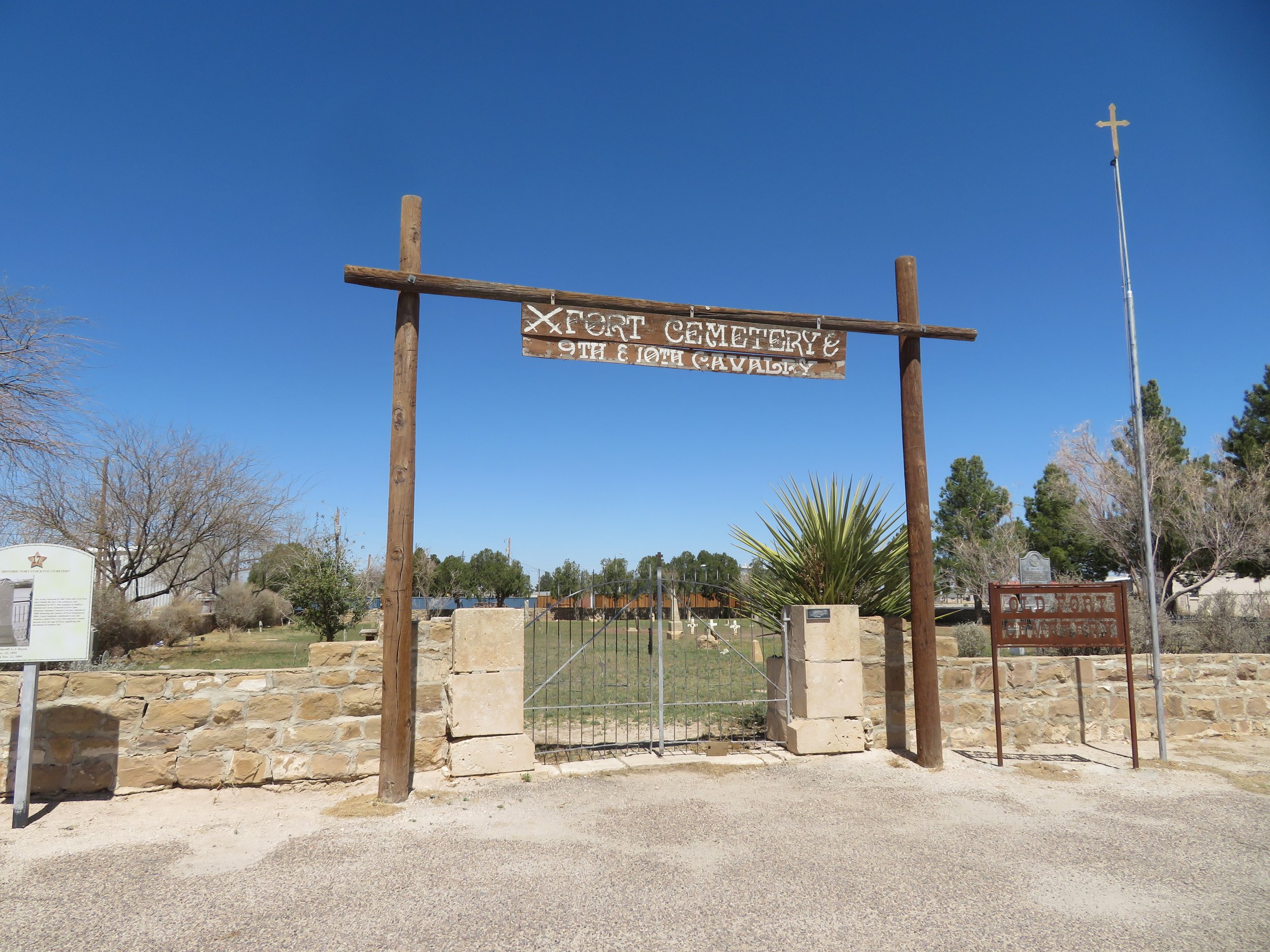Fort Stockton, Texas & Paisano Pete
/It’s a long, long drive to exit Big Bend National Park and get back to civilization… 20 miles to the Panther Junction Visitor Center, then 70 more miles to the little town of Marathon. From there, we drove another 45 miles north to Fort Stockton.
Miles and miles of desert landscape whizzed by, sandy, arid land studded with yucca, mesquite and sotol. Cattle grazed on what little they could find. When it does rain, the dry land cannot absorb it all, so it floods. There were flood gauges measured in feet all along this route with warning signs of possible flooding in the low areas and dips in the road.
We decided on a hotel night in Fort Stockton… hot showers (no time limitations like the park showers), unlimited Wi-Fi for our king sized bed, laundry facilities and A/C. I had picked up a Fort Stockton brochure previously and done a little on-line research to set an itinerary for exploration of the town. We headed out to see what we could see. Laundry could wait.
The Visitor Center is located in the original Kansas City, Mexico & Orient Railroad depot built in 1911 and it seemed a good place to start.
Beyond the plethora of information available at the center, there are terraced gardens accentuating Comanche Springs, a centuries old water source used by native people and subsequently by travelers, the fort and town folk.
Interpretive metal sculpture silhouettes by Brian Norwood are placed strategically around the center grounds and highlight important aspects of the town’s history… the Comanche People, the military, early settlers and vaqueros.
Across the street from the Visitor Center is Paisano Pete, the town mascot. Pete, erected in 1980, is an 11-foot tall, 22-foot long roadrunner sculpture, touted as the largest roadrunner in the world.
He’s not, however, the largest roadrunner in the world because a larger roadrunner was subsequently constructed in Las Cruces, NM out of recycled materials and it’s larger… but certainly not as handsome. I’ll stick with Pete.
A block away from Pete is the Historic Fort Stockton Cemetery. It’s a sad looking place with signs of neglect and vandalism. The cemetery was established in 1875 for fort soldiers and civilians. The remains of soldiers were moved to Fort Sam Houston National Cemetery in 1888 when Fort Stockton was closed.
White crosses mark the original grave locations. Locals used the cemetery until about 1912. A sign at the cemetery notes that few markers record anyone interred here beyond the age of 40, attesting to the rigors and harshness of frontier life.
One notable gravestone was that of A J Royal, an unpopular sheriff, ‘assassinated’ in 1894. According to legendsofAmerica.com, “A quarrelsome and intimidating man, Royal killed one of his employees after the two got into a dispute. Despite the killing and his personality, Royal was elected Pecos County Sheriff in 1892. A controversial figure from the start, area citizens were initially split in their opinions. While some thought he was a tough lawman who worked hard to establish law and order, others thought he abused his power as sheriff, often terrorizing those who disagreed with him.” No one was ever arrested for the murder, but legend has it that the local town leaders drew straws to see who would shoot Royal..
We took a short driving tour through the historic downtown area past the old courthouse and jail and the Grey Mule Saloon, now a tasting room for the local Mesa Vineyards. We made our way to the ‘oldest house’ which was quite the disaster area, all cordoned off, its walls crumbling, litter and junk strewn everywhere.
Fort Stockton does indeed have a fort. Established in 1858 by the US Army, its mission, like other western frontier forts of this vintage, was to protect travelers and settlers on the numerous roads, stage lines and trails from San Antonio to Mexico and California. It was hot and we were hungry and since, we reasoned, we’d recently visited a similar fort, we gave Fort Stockton a pass and opted instead for an early dinner, showers, laundry and a cool room. I think we were just touristed out.
We’ll recoup and regain our exploratory natures and continue on our Wild West Tour next time when we visit Langtry, Judge Roy Bean and ‘The Law West of the Pecos’.















